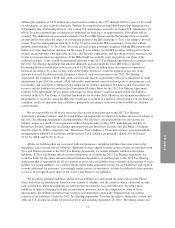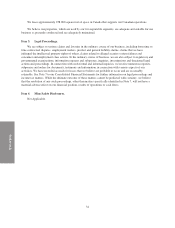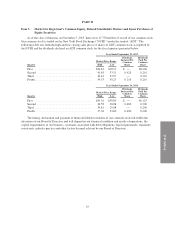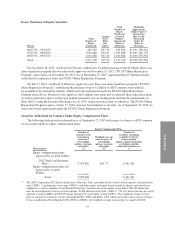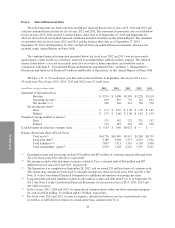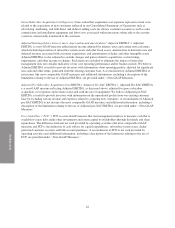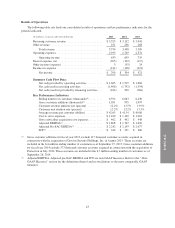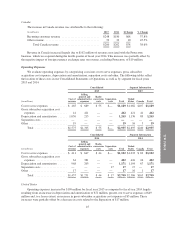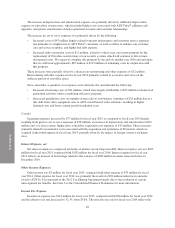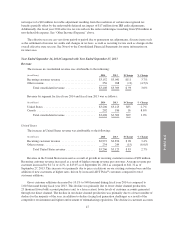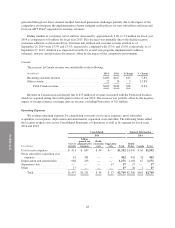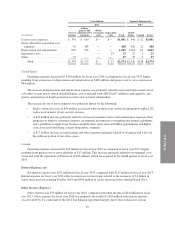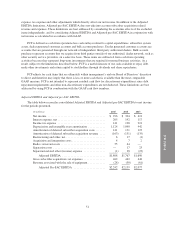ADT 2015 Annual Report Download - page 115
Download and view the complete annual report
Please find page 115 of the 2015 ADT annual report below. You can navigate through the pages in the report by either clicking on the pages listed below, or by using the keyword search tool below to find specific information within the annual report.
FORM 10-K
Key Performance Measures
We operate our business with the goal of retaining customers for long periods of time in order to recoup our
initial investment in new customers, achieving cash flow break-even in approximately three years. We generate
substantial recurring net operating cash flow from our customer base. In evaluating our financial results, we
review the following key performance indicators:
Customer Growth. Growth of our customer base is crucial to drive our recurring customer revenue as well as to
leverage costs of operations. To grow our customer base and improve awareness of our brands, we market our
monitored security and home/business automation systems and services through national television
advertisements, Internet advertising, a direct sales force and an authorized dealer network. The key customer
metrics that we use to track customer growth are gross customer additions and ending customers. Gross customer
additions are new monitored customers installed or acquired during the period. Both gross customer additions
and ending number of customers exclude contracts monitored but not owned.
Customer Attrition. Our economic model is highly dependent on customer retention. Success in retaining
customers is driven in part by our discipline in accepting new customers with favorable characteristics and by
providing high quality equipment, installation, monitoring and customer service. We assess and manage
customer retention using customer unit attrition and customer revenue attrition.
Customer Unit Attrition Rate. Customer unit attrition measures residential and business customer sites
canceled, excluding health services and contracts monitored but not owned, net of dealer charge-backs and
re-sales. Customer sites are considered canceled when all services are terminated. Dealer charge-backs
represent customer cancellations charged back to the dealers because the customer canceled service during
the charge-back period, generally twelve to fifteen months. Re-sales are inactive customer sites that are
returned to active service during the period. The customer unit attrition rate is a 52-week trailing ratio, the
numerator of which is the customer sites canceled during the period due to attrition, net of charge-backs and
re-sales, and the denominator of which is the average of the customer base at the beginning of each month
during the period.
Customer Revenue Attrition Rate. We also evaluate our customer retention based upon the customer revenue
attrition, which is defined as the recurring revenue lost resulting from customer attrition, net of dealer
charge-backs and re-sales, excluding contracts monitored but not owned. The customer revenue attrition rate
is a 52-week trailing ratio, the numerator of which is the annualized recurring revenue lost during the period
due to attrition, net of dealer charge-backs and re-sales, and the denominator of which is total annualized
recurring revenue based on an average of recurring revenue under contract at the beginning of each month
during the period.
Recurring Customer Revenue. Recurring customer revenue is generated by contractual monthly recurring fees for
monitoring and other recurring services provided to our customers. Our other revenue consists of revenue
associated with the sale of equipment, amortization of deferred revenue related to upfront fees, non-routine repair
and maintenance services and customer termination charges.
Average Revenue per Customer. Average revenue per customer measures the average amount of recurring
revenue per customer per month, excluding contracts monitored but not owned, and is calculated based on the
recurring revenue under contract at the end of the period divided by the total number of customers under contract
at the end of the period.
Cost to Serve Expenses. Cost to serve expenses represent the cost of providing services to our customers reflected
in our Consolidated Statements of Operations. These expenses include costs associated with service calls for
customers who have maintenance contracts, costs of monitoring, call center customer service and guard response,
partnership commissions and continuing equity programs, bad debt expense and general and administrative
expenses. Recurring customer revenue less cost to serve expenses represents our recurring revenue margin.
41


